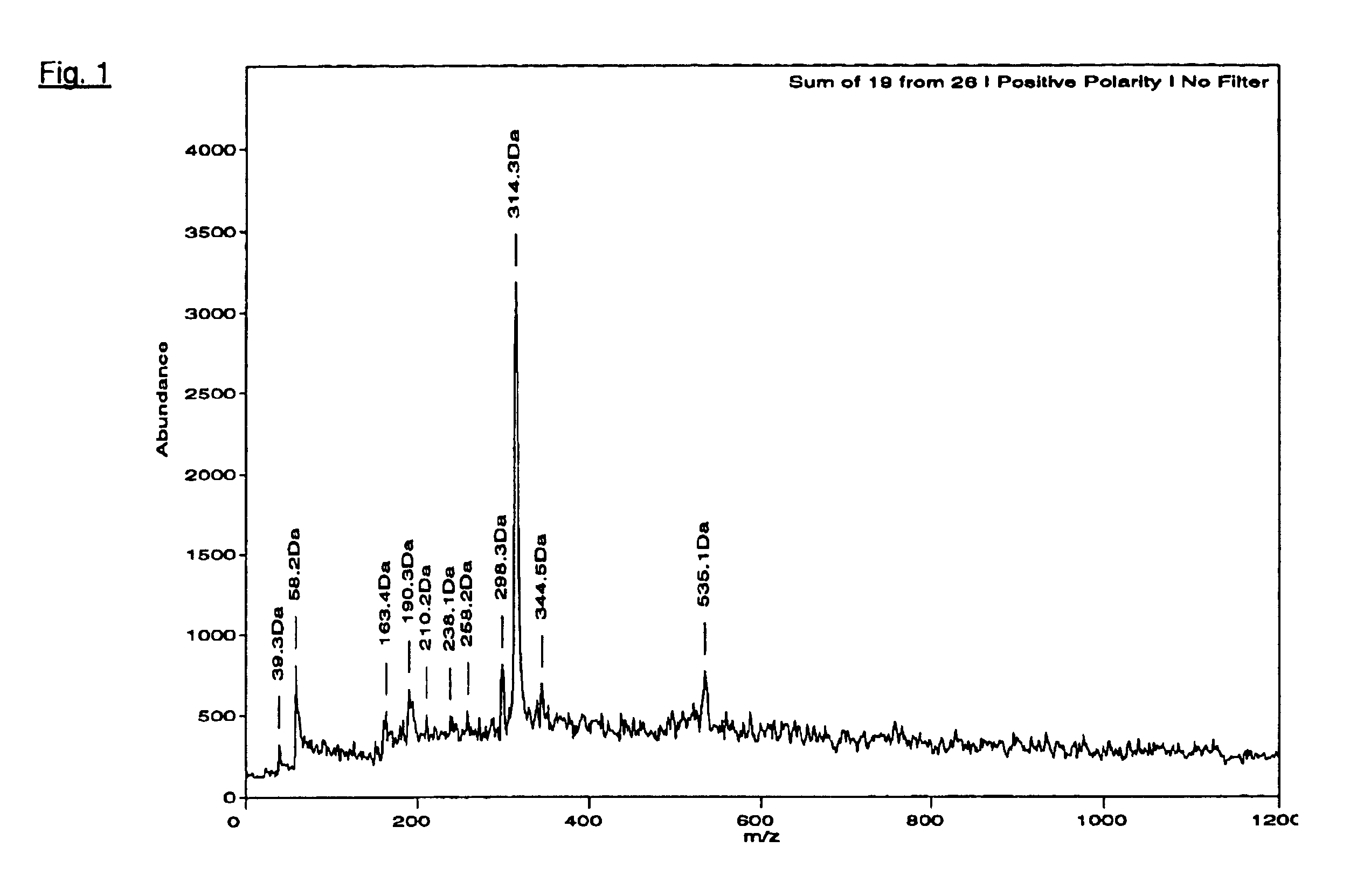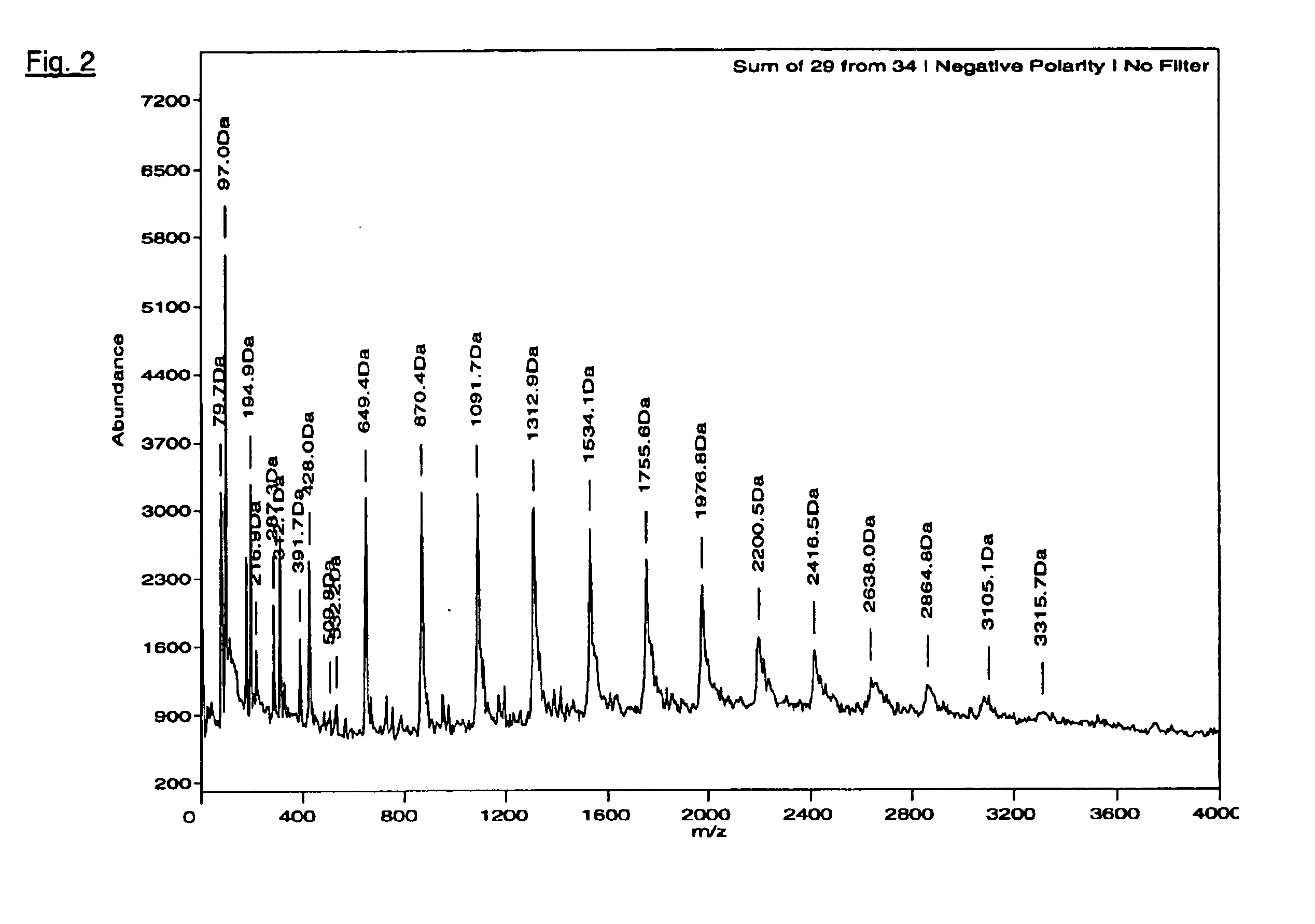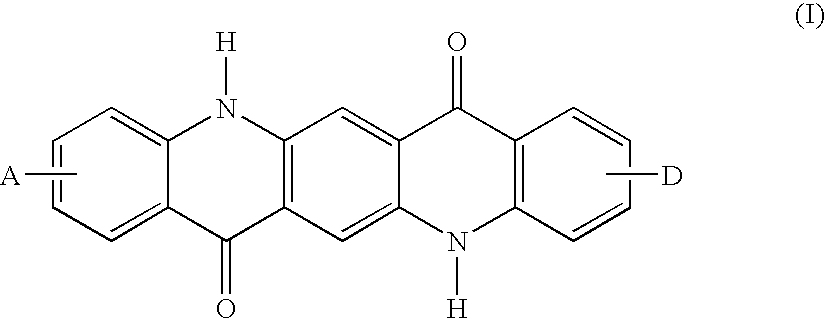Preparation and use of nanosize pigment compositions
a technology of compositions and pigments, applied in nanotechnology, organic dyes, chemistry apparatuses and processes, etc., to achieve the effects of high chroma, high performance and efficient means of preparing pigments
- Summary
- Abstract
- Description
- Claims
- Application Information
AI Technical Summary
Benefits of technology
Problems solved by technology
Method used
Image
Examples
example 1
[0052]A one liter flask equipped with a stirrer, thermometer, condenser and drying tube is charged with 200 ml concentrated (95-98%) sulfuric acid. 31.2 g unsubstituted quinacridone (Cromophtal® Red 2020, Ciba Specialty Chemicals Inc.) are added at a temperature below 45° C. and the mixture is stirred for 10 minutes at 40-45° C. to dissolve the pigment.
[0053]39.7 g of a wet naphthalene sulfonic acid sodium salt presscake with a solid content of 58%, a mixture containing 80% 1-naphthalene sulfonic acid sodium salt and 20% 2-naphthalene sulfonic acid sodium salt (Shanghai Shen Li Chemical Factory) are added at a temperature below 45° C. and the mixture is stirred for 15 minutes at 40-45° C. followed by the rapid addition of 3.2 g para formaldehyde. The reaction mixture is stirred for one hour at 58-60° C. then poured into 2.5 l ice water. The violet precipitate is stirred for 1 hours at 5-20° C., then filtered. The violet press cake is washed with water to a pH of about 2.5 and kept a...
example 2
[0057]A one-liter flask equipped with a stirrer, thermometer, condenser and drying tube is charged with 200 ml concentrated (95-98%) sulfuric acid. 17 g 2,9-dimethylquinacridone pigment (Cromophtal® Pink PT, Ciba Specialty Chemicals Inc.) is added at a temperature below 45° C. and the mixture is stirred for 10 minutes at 40-45° C. to completely dissolve the pigment.
[0058]19.9 g of a wet naphthalene sulfonic acid sodium salt presscake with a solid content of 58%, a mixture containing 80% 1-naphthalene sulfonic acid sodium salt and 20% 2-naphthalene sulfonic acid sodium salt (Shanghai Shen Li Chemical Factory) are added at a temperature below 45° C. and the mixture is stirred for 30 minutes at 40-45° C. followed by the rapid addition of 1.6 g para formaldehyde. The reaction mixture is stirred for one hour at 58-60° C. then poured into 2.5 liter ice water. The bluish violet precipitate is stirred for 1 hour at 5-20° C., and then filtered. The violet press cake is washed with water to a...
example 3
[0060]A one-liter flask equipped with a stirrer, thermometer, condenser and drying tube is charged with 150 ml concentrated (95-98%) sulfuric acid. 14 g 2,9-dimethoxyquinacridone are added at a temperature below 45° C. and the mixture is stirred for 10 minutes at 40-45° C. to completely dissolve the pigment.
[0061]15 g of a wet naphthalene sulfonic acid sodium salt presscake with a solid content of 58%, a mixture containing 80% 1-naphthalene sulfonic acid sodium salt and 20% 2-naphthalene sulfonic acid sodium salt (Shanghai Shen Li Chemical Factory) are added at a temperature below 45° C. and the mixture is stirred for 15 minutes at 40 to 45° C. followed by the rapid addition of 1.2 g paraformaldehyde. The reaction mixture is stirred for one hour at 58-60° C. then poured into 2.5 liter ice water. The bluish violet precipitate is stirred for 1 hours at 5-20° C., then filtered. The bluish violet press cake is washed with water to a pH of 2-2.5 and kept as presscake.
[0062]About 0.5 g of...
PUM
| Property | Measurement | Unit |
|---|---|---|
| particle size | aaaaa | aaaaa |
| temperature | aaaaa | aaaaa |
| temperature | aaaaa | aaaaa |
Abstract
Description
Claims
Application Information
 Login to View More
Login to View More - R&D
- Intellectual Property
- Life Sciences
- Materials
- Tech Scout
- Unparalleled Data Quality
- Higher Quality Content
- 60% Fewer Hallucinations
Browse by: Latest US Patents, China's latest patents, Technical Efficacy Thesaurus, Application Domain, Technology Topic, Popular Technical Reports.
© 2025 PatSnap. All rights reserved.Legal|Privacy policy|Modern Slavery Act Transparency Statement|Sitemap|About US| Contact US: help@patsnap.com



